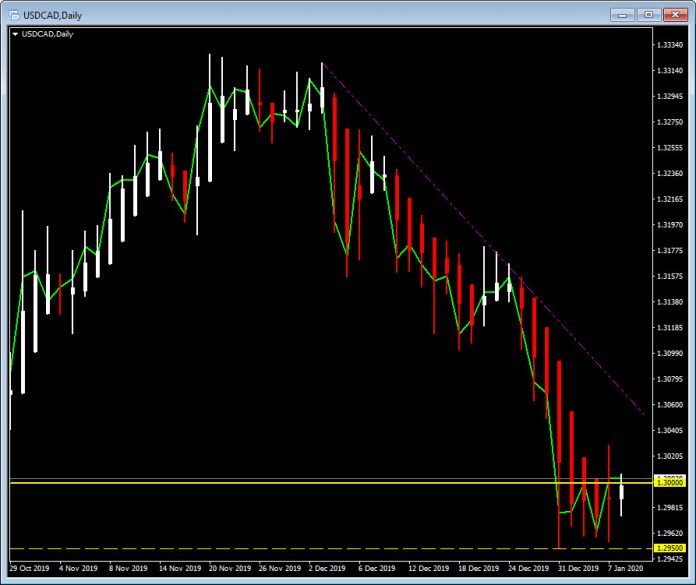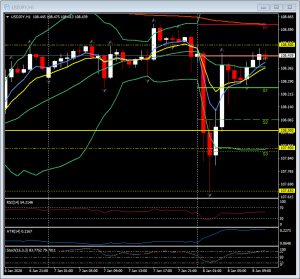USDCAD, H1
The Yen surged and then sharply unwound gains in volatile trading during trading in Tokyo. The rally in the Japanese currency was part of a broader dash for safe haven assets and currencies following news that Iran had fired missiles at two US bases in Iraq. The US reported no casualties, and President Trump’s initial tweet responses were notable for the lack of bellicosity, saying that “All is well!” and “So far, so good.” Official Iranian statements were also measured, though warned of “a painful response” to any further US action, while the Islamic Revolutionary Guard Corps said that “Operation Martyr Soleimani” had only just begun. The more hawkish members of Trump’s Republican party also signalled that Tehran had gravely miscalculated US resolve. Trump said he would make a statement later today, which will be a major focus for markets. More volatility in global markets seems assured given the uncertainty about the situation, although both sides are showing a clear desire to avoid a full-blown war.
The burst of Yen buying drove USDJPY to a three-month low at 107.65 before the pair rebounded to near net unchanged levels in the mid 108.00s. The rebound mirrored a recovery in stock markets in Asia, though most of the indices across the region, while off their lows, have remained firmly in the red. Oil and gold prices also spiked to fresh trend highs before retreating some. EURUSD remained in a narrow range around 1.1150. Sterling ticked moderately higher, but remained within its respective Tuesday ranges against the Dollar and Euro. AUDUSD printed a fresh three-week low at 0.6850 before rebounding back above 0.6880.
USDCAD dropped back below 1.3000 concomitantly with oil prices rising to fresh trend highs following the overnight news. The pairing remained above the three-month low seen on December 31 at 1.2951. The surge in oil prices over the last several months, which has been extended by the flare-up in US-Iran tensions, has been underpinning the Canadian Dollar. USOil is up by some 24% from the lows seen last September. Gains of that magnitude, if sustained, are a big boon to Canada’s terms of trade, hence the correlation between oil prices and the Canadian currency. The Fed’s removing of a forecast for a 25 bps hike in 2020 at its FOMC policy meeting in December has also been weighing on USDCAD, with markets presently discounting about 60% odds for the Fed to cut rates by 25 bps or more by the end of 2020. The pairing looks likely to continue to trade with an overall downside bias. A breach of the 1.2950 support area will bring 1.2900 and even the September 2018 low of 1.2780 into play. A sustained break and breach of 1.3000-50 is required for the pair to move back to the upside. The 20-day moving average and S3 sit at 1.3100.
Click here to access the Economic Calendar
Stuart Cowell
Head Market Analyst
Disclaimer: This material is provided as a general marketing communication for information purposes only and does not constitute an independent investment research. Nothing in this communication contains, or should be considered as containing, an investment advice or an investment recommendation or a solicitation for the purpose of buying or selling of any financial instrument. All information provided is gathered from reputable sources and any information containing an indication of past performance is not a guarantee or reliable indicator of future performance. Users acknowledge that any investment in Leveraged Products is characterized by a certain degree of uncertainty and that any investment of this nature involves a high level of risk for which the users are solely responsible and liable. We assume no liability for any loss arising from any investment made based on the information provided in this communication. This communication must not be reproduced or further distributed without our prior written permission.





















